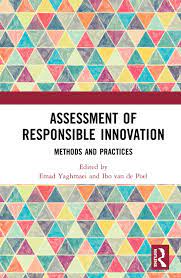
Luck In Scientific Work
Last week I wrote a post about Alexander Fleming’s luck in discovering penicillin. I want to continue this discussion this week, as I left it (deliberately) one-sided.
Fleming went on holiday without cleaning his dishes, some mold grew that seemed to secrete something that killed some types of bacteria. Had he cleaned the dishes, he would not have made the discovery and nobody would know his name today.
But we have to acknowledge that this little piece of luck found itself in a scientific laboratory, and it was not luck that led Fleming to understanding the importance of the mold. Other people might not have noticed what was happening for example, only a chemist working with bacteria would have understood the importance of the gap developing between the mold and the bacteria..
In effect, we could see the growth of the mold was part of the experiment process, even though it was unforeseen. Without the scientific process it becomes merely mold!
Here is an article about other discoveries that owe something to luck.
Luck as a Scientist
From the various articles in the Journal of Responsible Innovation special issue on luck, I learn that luck is seen by scientists as playing a greater role in science’s social worlds, rather than the experiments themselves. Who receives your project (luckily someone who shares your approach maybe) could be important in terms of whether it receives funding or is rejected. Meeting someone in a lift who gives you a tip about something, or flicking through the cable TV in your hotel room and coming across a program that sets off a chain reaction in your thinking that leads to an understanding, lucky events that may lead to something big.
Obviously, we can take this as far back as we want, and bring in global political events such as wars and pandemics, but lucky encounters on a local level do seem to be important in building careers and carrying out scientific processes.
Luck in the Future
Now the big question then. What about luck in the future regarding something that you have developed yourself as a scientist?
Let’s take the invention of the electronic joystick by SEGA in 1969 as en example. This revolutionary control system boasted a fire button that enabled players of their Missile game to steer their missile towards enemy tanks on the screen. Little did the developers know (nor could they have predicted) the uses that this technology would be put to in the future: remote surgery techniques, flying modern jet aircraft, and flying unmanned drones over foreign lands, executing people from the comfort of an office in the USA.
There is a risk that your discovery will go on to be used for things that you might not like. You may be lucky or you may be unlucky, and may receive credit for having bettered the world, or unlucky and face huge criticism in the future.

